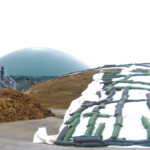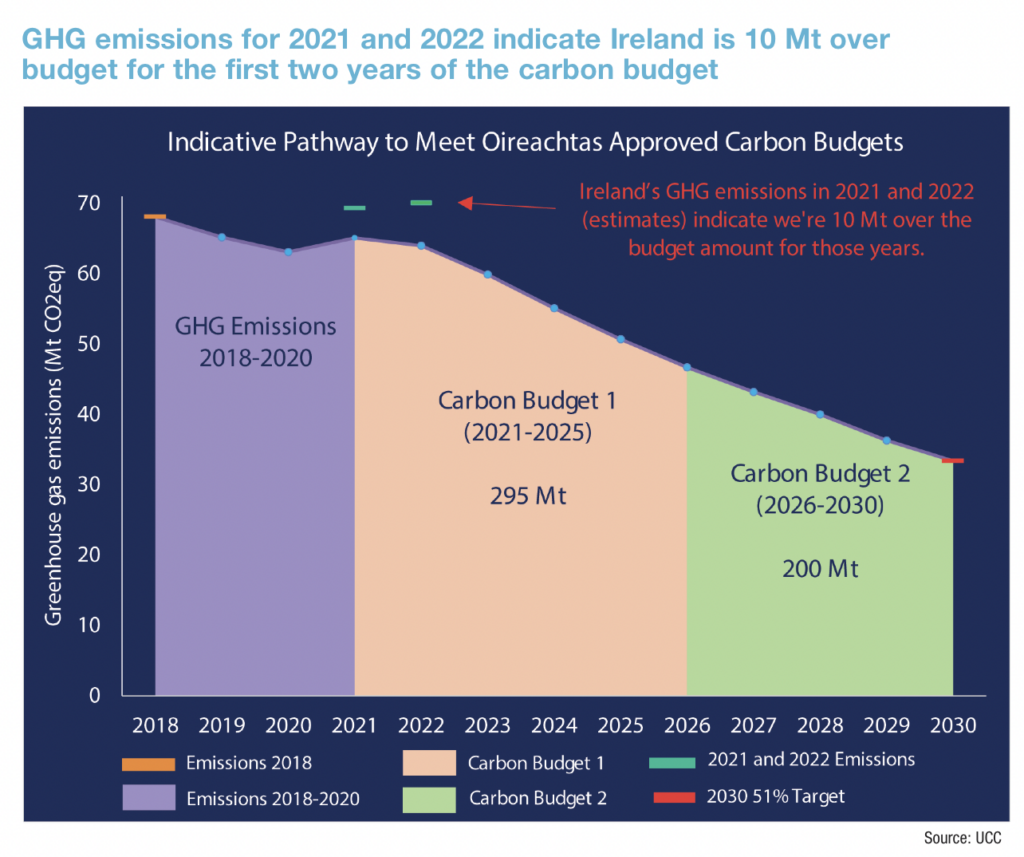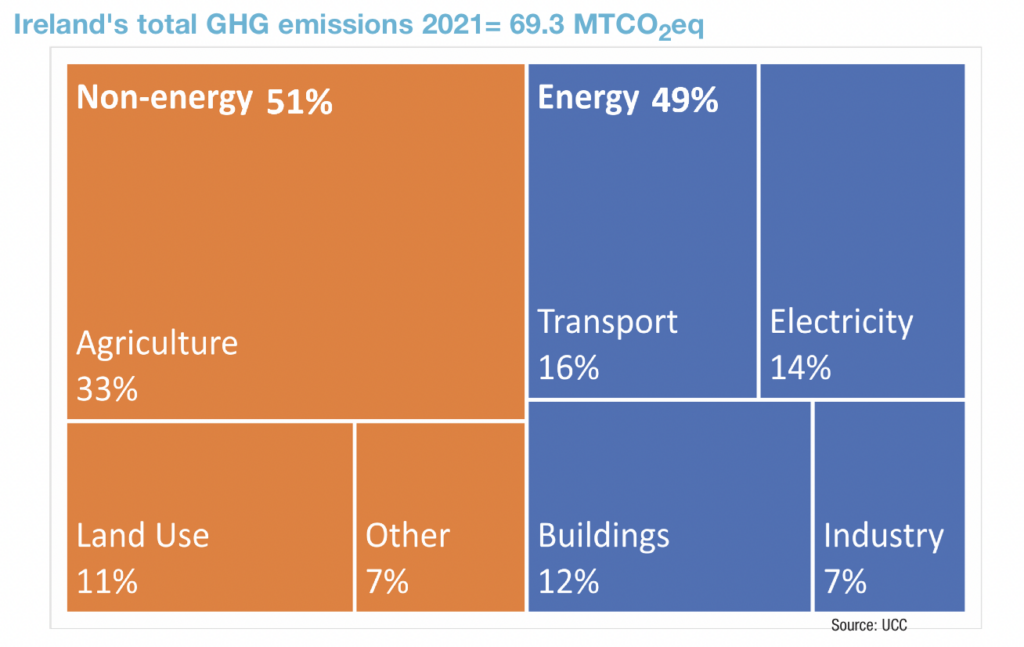
The Irish biomethane sector requires policy and action to mobilise
9th October 2023
Decarbonising Ireland’s heat demand
9th October 2023Accelerating the energy transition

Associate Vice-President of Sustainability at University College Cork, Brian Ó Gallachóir, outlines Ireland’s performance with the current carbon budgets and ceilings and asks whether a greater focus needs to be put on reducing consumption and climate-proofing industrial and economic policy.
Contextualising Ireland’s 1.9 per cent reduction of CO2 emissions in 2022 within the EU’s 2.4 per cent reduction for the same period, Ó Gallachóir explains that Ireland’s energy system experienced different dynamics to the rest of Europe, where emission reduction was driven by a 19 per cent reduction in gas demand.
Despite Ireland’s positive performance, Ó Gallachóir expresses concern around “the blind spot we have in consumption growth, which is impacting our emission trajectory relative to our ambition”.
Carbon budgets
Ó Gallachóir describes the introduction of carbon budgets as a “game-changer”, due to the increase in ambition and governance in how Ireland aims to achieve its emission reduction targets.
Under the first climate budget framework Ireland needs to remain within 295 MtCO2eq emissions during 2021-2025, however, GHG emissions for 2021 and for 2022 indicate that Ireland is some 10 MtCO2eq over budget for those first two years.
“We have passed by 40 per cent of the time of the first carbon budget but we have emitted 47 per cent of the overall carbon budget,” he explains.
“In broad terms, we have been emitting 70 MtCO2eq per year, meaning that in the final three years, we have an average budget of 52 MtCO2eq per year, requiring a significant reduction.
“We need to accelerate the energy transition,” he states.
Energy
Focusing the emission lens on the energy sector, the Associate Vice-President says that for sectoral emissions, the introduction of carbon ceilings is also “game-changing”. Energy now accounts for just under half of Ireland’s greenhouse gas emissions, incorporating transport (17 per cent), electricity (14 per cent), and the thermal heat sectors of buildings (11 per cent), and industry (6 per cent).
To date, electricity has been Ireland’s greatest decarbonisation story, achieving a 45 per cent reduction
between 2005 to 2020, despite a 12 per cent growth in electricity demand.
Despite this progress, Ireland is furthest off track in relation to its electricity ceiling target, prompting Ó Gallachóir to suggest the existence of “blind spots” within ambitious decarbonisation efforts.
“We are ignoring the need to rapidly reduce energy consumption and that is a key challenge,” he says.
In the two years which have passed included in the five-year carbon ceilings periods (40 per cent of the time), Ireland has used 49 per cent of its electricity emission ceiling, 42 per cent of the transport emission ceiling, and 47 per cent of the industry and buildings emissions ceilings.
“We have a real challenge to bring ourselves back on track in terms of those sectoral emissions ceilings and we need to understand the reasoning behind those numbers. Transport, for example, looks like the sector which is closest to being back on track but if you remember the spring of 2021, the country was essentially in a lockdown scenario, and that context is not captured in the numbers.”
The challenge for each sector is clear. For electricity Ireland needs to move from 10 MtCO2 of annual average greenhouse gas emissions in 2021 and 2022 to 7 MtCO2 between 2023 to 2025.
For transport, the reduction required is 11 MtCO2 of annual average greenhouse gas emissions in 2021 and 2022 to 10 MtCO2 between 2023 to 2025.
Buildings and industry will require a move from 15 MtCO2 in 2021 and 2022 to 11 MtCO2 between 2023 to 2025.
Ó Gallachóir points out that these challenges are not without policy direction and welcomes the shift to an annual iteration of the Government’s Climate Action Plan to build in flexibility.
Electricity
Discussing what is needed if the electricity sector is to stay below its sectoral ceiling, Ó Gallachóir points to the obvious need to accelerate renewable electricity deployment, but also be conscious of how supply is being maintained when renewable generation is not available.
“We have to move towards a trajectory of increasing our share of renewable electricity but the other part of the electricity mix, and how we make up that shortfall, is very important. One of the reasons we have overshot our annual emissions within the ceiling so far is around how coal has displaced gas in the last couple of years relative to 2018/19.
“In 2022, gas use in Ireland increased as oil, peat, and coal demand decreased. This represents a positive trend of emission reduction, but it is also one of the reasons our gas demand has not reduced in the same way it has across Europe.”
On the need to reduce electricity consumption, Ó Gallachóir raises the question as to whether industrial and economic policies are fully cognisant of how things like data centres are having a unique impact on Ireland’s electricity growth, relative to other member states. Similarly, he highlights the conundrum that is that while the co-benefits of emission reductions are best targeted at those in experiencing energy vulnerability, those of higher disposable incomes tend to be the largest emitters and have greater capacity to take advantage of available grant supports.
Transport
Renewable energy use in transport grew by over one quarter in 2022 relative to 2021, driven mainly by use of biofuels. This growth, however, mitigated only 1 per cent of a 7 per cent growth in transport emissions for 2022.
Flagging another potential blindspot, Ó Gallachóir, while welcoming the impressive uplift in EV sales in Ireland in recent years highlights that something which is often not part of the narrative is even larger growth of SUV sales. SUVs are now more than 50 per cent of new car sales in Ireland.
“While we are seeing progress in emission reduction in key areas, it is clear that if we only focus on those key areas, we are not going to achieve the overall change we want to.”
Similarly, he highlights the co-benefits of the promotion of active travel and public transport in not only reducing emissions but reducing car dependency. To this end, he highlights a focus on accelerating EVs as a positive step, but states that this must be done in conjunction with the displacement of private car travel.
He adds: “While our national emissions targets are set around road transport, reduction of our overall transport emissions will also require a rethink of maritime and aviation policy.”
Heat
In 2022, the share of renewable heat in Ireland went down by 6 per cent, placing Ireland at the bottom of the European league table in this regard. While a reduction of overall heat demand in 2022, could be seen as a positive, the reality is that this reduction was largely driven by high energy costs, and not by a conscious effort to reduce emissions.
Explaining that the acceleration of retrofitting, the electrification of heat and renewable heat generation are critical to emission reduction and meeting the sectoral targets, the academic is also quick to point out that efforts to reduce heat demand must be tailored in a country where winter excess mortality rates remain a challenge.
Concluding, Ó Gallachóir says: “We need to accelerate renewable electricity, electrification, and retrofitting but we also need to have a stronger focus on reducing consumption, promoting and encouraging demand reduction, but we also need to climate-proof some of our industrial and economic policies in terms of what type of organisations and activities we are attracting to Ireland.”


